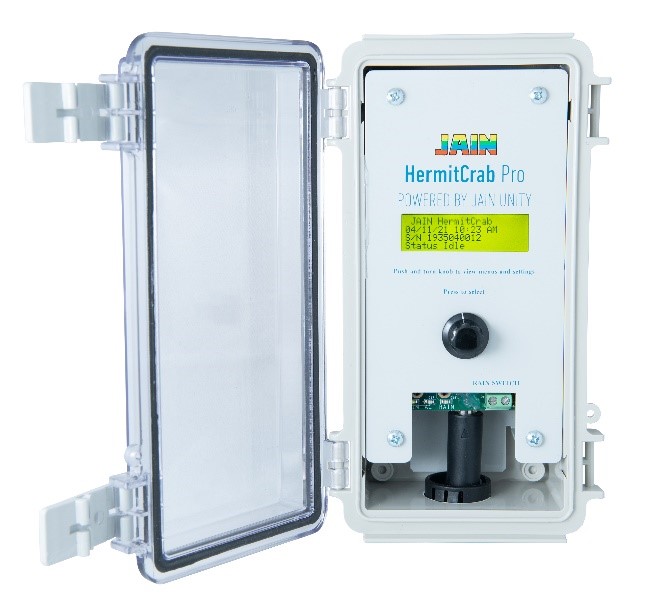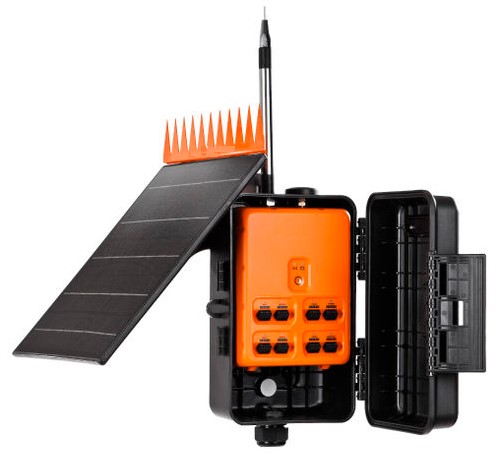Reaching more than 8 million farmers in 120 countries, Jain Irrigation, Inc. is a world leader of technology for precision agriculture and irrigation solutions that address global food and water shortages. From tubing and valves to the sophisticated hardware and software to run them, Jain’s products integrate satellite imagery, weather forecasts, and soil information while leveraging machine learning and AI to make irrigation decisions.
Optimizing Water Usage
 For decades, plentiful and inexpensive water has remained the one resource that farmers and homeowners alike could rely on without much concern or thought. Today, however, the cost and availability of water have led many high-consumption users to rethink their water strategies and reckon with significantly greater expenses, while also reducing their environmental impact.
For decades, plentiful and inexpensive water has remained the one resource that farmers and homeowners alike could rely on without much concern or thought. Today, however, the cost and availability of water have led many high-consumption users to rethink their water strategies and reckon with significantly greater expenses, while also reducing their environmental impact.
Jain Irrigation has developed a broad portfolio of solutions to address the watering concerns of large homeowner associations with dozens of acres of manicured shrubs, turf, flowers, trees, and more. “These plants consume enormous amounts of water,” said Kevin Heverin, director of marketing for Jain, “but each type requires different amounts and frequencies. Unfortunately, the reality is that traditional irrigation methods for large-scale residential developments can waste as much as 50% of the water they spray.
“In agriculture, the stakes are even higher. You want the right amount of water to maximize crop yields — but without waste. You don’t want too little, which can hold back yields and quality. But you also don’t want too much, which can waste money, drown roots, and, if fertigating, potentially leach nitrates and other compounds into groundwater supplies. And the answers are changing every day, based on the crops, the soil conditions, upcoming weather, and other variables.”
More Crop for the Drop: Automated. Smarter Irrigation for Precision Agriculture
 Whether for landscaping or farming, Jain’s solutions combine connectivity and back-end intelligence to automate and optimize watering and fertilizing strategies, reduce labor and energy costs, conserve water, and maximize yields. Jain data acquisition and telemetry (DAT) equipment can remotely actuate valves, turn on pumps, and, in the agricultural setting, use a range of sensors to capture temperature, humidity, soil moisture, wind speeds, irrigation line pressures, and more. Jain DAT equipment — the Smartbox® and HermitCrab® in Landscaping and the C3® in Agriculture - communicate with the cloud via Digi XBee® 3 Cellular LTE series modems. The option for solar-powered operation means deployment can happen in almost any location.
Whether for landscaping or farming, Jain’s solutions combine connectivity and back-end intelligence to automate and optimize watering and fertilizing strategies, reduce labor and energy costs, conserve water, and maximize yields. Jain data acquisition and telemetry (DAT) equipment can remotely actuate valves, turn on pumps, and, in the agricultural setting, use a range of sensors to capture temperature, humidity, soil moisture, wind speeds, irrigation line pressures, and more. Jain DAT equipment — the Smartbox® and HermitCrab® in Landscaping and the C3® in Agriculture - communicate with the cloud via Digi XBee® 3 Cellular LTE series modems. The option for solar-powered operation means deployment can happen in almost any location.
The Smartbox® is a landscape controller that can control up to 48 valves powered by the Jain Unity software platform for predictive irrigation. The HermitCrab® retrofits an existing commercial controller so it can connect to the cloud take advantage of Jain Unity. The C3® is a fully integrated, battery-powered gateway that connects to a wide range of external sensors — even in rugged, exposed environments like farm fields.
The C3®, in conjunction with Jain Logic® software, adds remote monitoring and diagnostics in places where power is not readily available — with easy installation, high reliability, and low data usage. Pre-certified Digi XBee cellular modems use a small footprint, and lower power to transmit all of the data collected from Jain DAT units via cellular or 900 MHz connections.
That data goes through the cloud to feed Jain’s sophisticated AI applications for smarter irrigation decisions. A typical homeowners association might deploy one Jain unit per acre. A farm might implement dozens or hundreds of sensor packages across its fields.
“Each hour, we’re sending millions of data points from thousands of sites to our centralized application,” said Gian Allen-Piccolo, hardware development director for Jain. “We use that data along with metrics like soil composition, crop type and plant age to calculate new crop coefficients. Then we factor in weather conditions and forecasts to determine what the upcoming water requirements will be. How much water is there? Do you need potable water? Is there a heat wave or rain in the 14-day forecast? The goal remains the same: How can we get more crop from each drop?”
Jain’s solution also offers other key advantages in energy and labor savings. “Right now, labor is both costly and hard to find,” said Heverin. “To implement constantly changing, precise irrigation plans, you need to continuously measure conditions, but it’s expensive to pay people to drive around and read meters and change settings. Our solution uses telemetry to open and close valves according to schedules that can change at any moment based on conditions. That reduces labor costs significantly.”
Heverin also noted that telemetry and remote monitoring enable farmers and homeowners associations to run pumps and wells at off-peak times. “You don’t want to pay for labor at midnight to turn valves on and off. And pumping the correct amounts of water at the right time of day can limit your energy costs.”
The Digi Advantages
According to Kyle Schien, senior technology manager for landscaping irrigation, the Jain team chose Digi as its connectivity foundation for several reasons. “We really liked the fact that all of the Digi XBee modems use the same footprint,” he said. “That gives us the flexibility to switch between Cat 1 and the LTE-M models or even the XBee SX 900 MHz for areas where cell coverage isn’t solid. It’s the same power requirements, same specs. And since it’s a simple firmware interface, we don’t have to rewrite a bunch of commands.
“The cost is another advantage for us. Digi products are affordable and they just work. They’re pre-certified — and that’s worth a lot to us. We sell high-value, low-volume products, and the challenge of certification, especially in global markets, becomes cost-prohibitive. Previously, certification was a nightmare for us — now it’s all taken care of.
“Finally, the people at Digi have been very responsive. When we ask questions, we get fast answers. Our reps take care of us. They’re great people working at a great company.”
What can a Jain solution mean to a homeowners association? Significant cost savings. For instance, one Arizona homeowners association was facing severe drought restrictions and spent more than $700,000 annually on water for landscaping. “After we deployed our system there, the HOA saw its water consumption drop by 43 million gallons a year, saving them $200,000 annually,” said Heverin. “That’s how our precision agriculture solutions can have an immediate, meaningful, and measurable impact.”